Frunze. Red Napoleon
"All to fight with Kolchak!"
The offensive of the Western Army Khanzhin led to the breakthrough of the center of the Eastern Front of the Red Army. The Eastern Front became the main for Moscow. The strategic reserves of the main command were directed east: the 2 Rifle Division, the 2 rifle brigades (the 10 Rifle Division from Vyatka, and the Bryansk Rifle Division from Bryansk) and 4 thou. Also, the Eastern Front command was handed over the 22 th rifle division (it was formed in Kazan), and the 35 th rifle division pulled up from the Vyatka direction.
12 April 1919 published the “Theses of the Central Committee of the RCP (b) in connection with the position of the Eastern Front” written by Vladimir Lenin ”, which became the combat program of the party’s work on mobilizing the country's forces and means to defeat Kolchak’s army. Lenin put forward the slogan "Everything to fight against Kolchak!" Hastily created a powerful Samara fortified area led by Karbyshev. This talented military engineer also prepared a system of "anti-attack" defense of Orenburg and Uralsk.
By May 1, replenishment arrived on the red eastern front - 17,5 thousand people, in May - 40,5 thousand people, including 7,5 thousand communists. Weapon, ammunition, equipment, first of all, were sent to the Eastern Front. By 1 in May, the number of troops of the Eastern Front of the Red Army was increased to 143 thousand, with 511 guns and more than 2400 machine guns. The Reds were superior in strength.
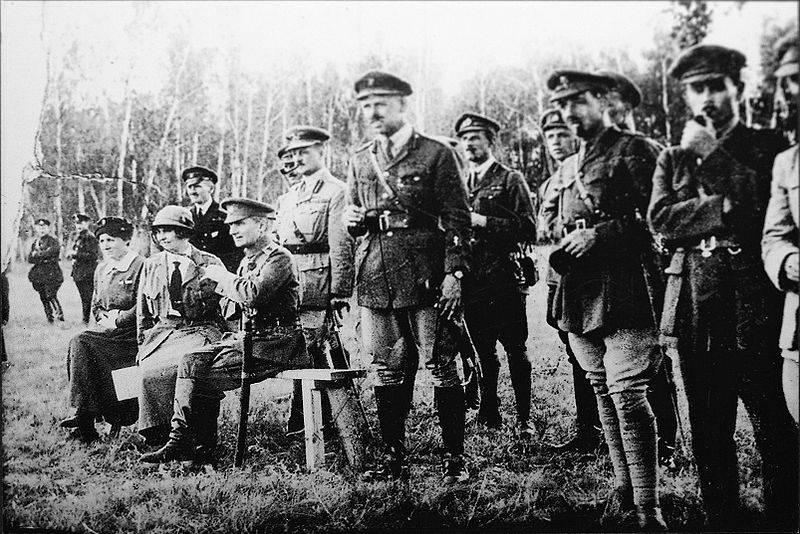
Admiral A.V. Kolchak (sitting), head of the British mission, General Alfred Knox, and British officers on the Eastern Front. 1919
Red Napoleon
The decisive role on the Eastern Front was to be played by the Southern Army Group led by Frunze, which, during the offensive of Kolchak, fully retained its combat capability. It is worth noting the role of Mikhail Vasilyevich Frunze in these events. It was a unique person. He started off as a classic revolutionary: revolutionary activity, participation in the Moscow uprising 1905 of the year, arrests, hard labor, flight, life on a fake passport. Chairman of the Minsk Council of Deputies in 1917. Participated in November 1917 of the year in battles in Moscow, in 1918 year - the chairman of the Ivanovo-Voznesensky Provincial Committee of the RCP (b) and the military commissar Ivanovo-Voznesenskaya. After the suppression of the Yaroslavl uprising - the military commissioner of the Yaroslavl military district.
In January, 1919 of the year was sent to the Eastern Front to fight the Ural white casings. Headed 4 th army. Frunze was a sober, tough and very calculating man. His idol was the great eastern commander Tamerlane, Frunze himself reminded him of something. He was a talented commander, and by nature, without a corresponding military education and military experience, command of regiments, divisions and corps. He had a rare intuition, knew how to find extraordinary solutions, sometimes he took risks and always won. On the one hand, he showed cruelty, on the other - chivalry and humanism.
He quickly brought order to the 4 Red Army, which took Uralsk, began to decompose. The soldiers did not want to go to the steppe in winter, to storm Cossack villages. In an attempt to restore discipline, the soldiers responded with riots, killed a member of the Revolutionary Military Council, Lindov, representatives of the central government Mayorov and Mägi. Frunze forgave the rebels, even the murderers of high-ranking officials. He won the authority of the commander. In February, 1919, the 4-I army deeply wedged between the forces of the Orenburg and Ural Cossacks, advancing on the line Lbishchensk - Iletsk - Orsk. The path to Turkestan was open. The shock 25 Division was re-created under Chapaev. On the basis of several scattered units that broke through from Turkestan, Frunze formed the Turkestan army. He became commander of the Southern Army Group. She was aimed at defeating the Ural and Orenburg white Cossacks.
When the offensive of Kolchak’s army began and the 5-I front of the Red Army collapsed in the center of the front, Frunze stopped the advance of the Southern Army Group and immediately began to regroup its troops in order to consolidate its position in the Orenburg sector and create a reserve. From the 4 Army (22 and 25 Division, to 16 thousand people), which held the front against the Ural White Cossacks, he took the 25 Division, and the army went on the defensive. The Turkestan army (12 thousand fighters) was to protect the Orenburg region and keep in touch with Turkestan. She strengthened a brigade 25-th division. Two other brigades of the 25 division were sent to the Samara region, a communications hub for Ufa and Orenburg. In the future, the 4 and Turkestan army restrained the offensive of the Orenburg and Ural White armies.
The right flank of the 1 Army (24 Division) in early April 1919 successfully developed the attack on the Trinity. The left flank of the 1 Army (20 division) tried to organize a counter-attack in the Sterlitamak area and sent one brigade to cover Belebey. However, the Reds were defeated in the Sterlitamak area. 4 - April 5 White took Sterlitamak and April 6 - Belebey, threatening the rear of the 1 Army. As a result, the left flank of the 1 Army was unable to support the defeated 5 Army, and the right flank stopped the attack. Under the cover of the remnants of the 20 division, which held back the enemy's onslaught to the south in the region of Belebey, the 24 division was successfully pulled back. The withdrawal of the 1 Army forced the units of the Turkestan Army to also retreat. K 18 - 20 April 1919, the new front of the Turkestan army passed through the line Aktyubinsk - Ilinskaya - Vozdvizhenskaya. Frunze also transferred his reserve to the Orenburg - Buzuluk area.
Thus, the red commander Frunze was able to avoid defeat, took back the retreating troops in time, regrouped his forces, strengthened his left wing (avoiding the threat of White’s breakthrough to the rear of the Southern group), and created a reserve. Thus, the foundations were created for the future counter-offensive of the Red Army.
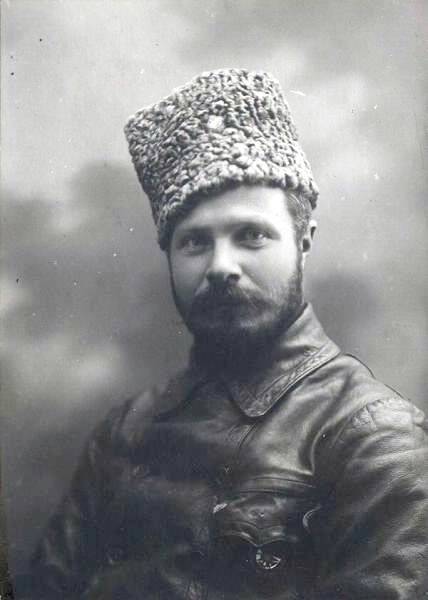
Red Commander Mikhail Frunze, 1919 Year
Red Command Plans
As the battle developed, the plan of the counter-offensive of the Red Army was ripening. At first, he was seen as a flank counterblow of the Southern Army Group along the left wing of the enemy's attack force. Frunze proposed to strike from the area of Buzuluk, from where it was possible to act in several directions. Moscow adopted his plan. 7 On April 1919, the command of the Eastern Front began to outline the concentration of the entire 1 Army in the Buzuluk-Sharluk area, which would attack the enemy advancing in the direction of Buguruslan-Samara.
9 April The Revolutionary Military Council of the Eastern Front expanded the operational framework of the Southern Army Group; it now included the broken 5, weakened 1, Turkestan and 4 armies. Her commander Frunze received almost complete freedom of action. Red Napoleon planned to launch an offensive depending on the end of the regrouping of his forces, before the end of the spring thaw or after it.
April 10 in Kazan held a meeting of the High Command. The southern group was ordered to strike from the south to the north and smash the whites, continuing to thrust the 5 army. At the same time, the Northern Army Group was formed as part of the 3 and 2 of the Red armies under the overall command of Shorin's 2 Army. The Northern Army Group was supposed to smash the Siberian Army of Hyde. The boundary line between the two army groups was drawn through the Birsk and Chistopol and the mouth of the Kama.
The situation at the front by mid-April 1919 was already in favor of the Reds. The striking power of the Russian army of Kolchak was already weakened, exhausted, its corps dispersed a great distance, lost contact with each other, the rear was lagging behind, the slaughter slowed down. The eastern front of the Red Army was declared the main one. His strength was constantly growing, both quantitatively and qualitatively. Thousands of Communists arrived at the party mobilization. In the Permian and Sarapulian directions, the forces of the enemy were already approximately equal: 37 thousand red fighters against 34 thousand white. In the central direction, the Khanzhin strike force still had an advantage: 40 thousand White Guards against 24 thousand Reds. But here the situation has changed a lot, at the beginning of the offensive White had a quadruple superiority, now it has significantly decreased. At the same time, the army of Khanzhin greatly stretched the front. Having taken Buguruslan on April 15, whites stretched their front by 250-300 kilometers, having the left wing southeast of Buguruslan and the right wing at Kama. On the southern wing of the Western army, Belov’s Southern Army Group, which was detained in the Orenburg direction by the resistance of the 1st Red Army of Guy, was far behind.
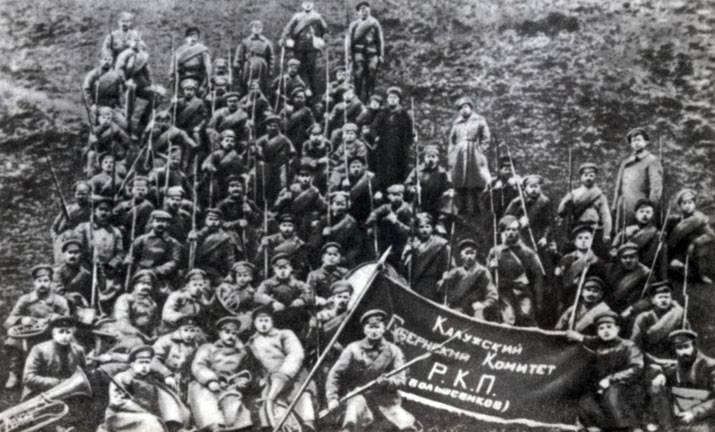
A detachment of communists, formed by the Kaluga Provincial Committee of the RCP (b) to be sent to the Eastern Front. 1919
Concentration of the shock group
As conceived by Frunze, the Turkestan and 4 armies were to keep defenses in the Orenburg and Ural directions. The 5 Army had to stop the White Guard advance in the direction of Buguruslan and along the Bugulma railway, covering the Buzuluk-Buguruslan-Bugulma line. The strike group of the 1 Army will strike the left wing of the enemy's attack force, throwing it northward. 20-Infantry Division regrouped, also 24-I “Iron Division” (without one brigade) was transferred to this direction, it had to hold down the enemy with his active actions, gain time to concentrate the main forces of the attack group in the Buuluk area. The best forces of the Southern group concentrated in the strike fist: the 1-th rifle division and the brigade of the 31-th cavalry division were transferred from the Turkestan to the 3 Army; a brigade of the 24 th rifle division was also deployed (to the area of Art. Totskaya), and from the strategic reserve of Frunze - the 75 th rifle brigade (2 regiment). Another reserve team - 73-I, was transferred to the area with. Bezvodnovki to cover the concentration of the shock group, and also was part of it. Another brigade remained in reserve, which could also strengthen the strike group.
The 5 Army — the weakened 26 Army, the 27 Army Divisions, the Orenburg Division and part of the 35 Army Division, had at that time about 11,5 thousand bayonets and sabers, 72 guns. The Frunze strike group included almost all the forces of the 1 Army (except for the 20 Infantry Division) - 24, 25, 31 Infantry Divisions and the 3 Cavalry Brigade. Shock fist numbered 24 bayonets and sabers with 80 guns. That is, Frunze had to attack about 36 thousand fighters near 150 guns. On the rest of the Southern Army Group front, about 700 km long, about 22,5 thousands of soldiers defended with 80 guns: parts of the 20 and 22 divisions, the remaining troops of the Turkestan Army and local units in Orenburg, Uralsk and Iletsk.
It is worth noting that Frunze was at great risk. He concentrated his main and best forces (including the 25 th Chapaevskaya, the 24 th Iron, the 31 th division, the Orenburg cavalry brigade) for the flank counter attack on the Khanzhin army. At the same time, in the south, the huge front was covered by weakened troops of the 4 and Turkestan armies. Should the Cossacks of the Orenburg and Ural armies take Orenburg and Uralsk, or simply bypass the fortified cities, closing them with barriers, and the masses of the Cossack cavalry of Dutov, Tolstov and Belov (the South White group) would go to the Buzuluk area, to the rear of the Frunze shock group. As a result, the Frunze troops would have been in the ticks between the White Cossacks and the Khanzhin army. However, this did not happen. Whether Red Napoleon took Cossack psychology into account, the Cossacks fought hard against their “capitals”, they didn’t want to go any further. Toli just took a big risk and eventually won. The headquarters of Kolchak was never able to establish a good interaction with the Cossack units, they fought their war. Kolchak's command practically paid no attention to the Cossacks. As a result, about 30 thousand Cossacks were bogged down in the siege of Orenburg and Uralsk. And Frunze got his chance to win.
Meanwhile, due to the deterioration of the operational situation, the start time of the operation had to be postponed and a new regrouping of forces took place. At the site of the 2 Army, White broke through to Chistopol and reached the Volga. This posed a threat to Kazan. In the area of the 5 Army, Kolchak troops were actively advancing in the Sergiev direction, opposing the 27 Division. This threatened the rail lines of the entire Southern Army Group, could disrupt the attack of the strike group. Therefore, the command of the front 16 of April threw in arriving reinforcements (part of the 2 th rifle division, part of the 35 th rifle division) not to strengthen the Frunze strike group in the Buzuluk area, but to reinforce the 5 th army and to cover the Volga frontally. Also, two brigades from the shock group of the 5 Army (1-rd infantry division, except for the 25-th rifle brigade) were transferred to the strengthening of the 73 Army.
Thus, the number of flank shock groups was significantly reduced. The center of gravity of the Reds blow was partially transferred from the flank and rear of the Western Army Khanzhin to the front. The 5-th Red Army on April 23 numbered 24 thousand bayonets and sabers (mainly due to the 1-th army). At the same time, the remaining troops of the strike fist of Frunze (31-rifle division, 73-rifle brigade, cavalry brigade) were named the Turkestan army.
Kolchak with generals Haida and Theological. 1919
Front of Kolchak's army in the central and southern sectors
By 20, April, 1919, a strong 2 Ufa Corps (4 and 8 Divisions, 15 thousand bayonets and sabers) launched an offensive on the Samara-Sergiev direction. The right flank of this group reached Chistopol. The White Corps 3 (6 Corps and 7 Corps Infantry Divisions, 3 Mounted Regiment, etc., about 5 Thousands of Fighters altogether) advanced in the direction of Buguruslan - Samara. On the ledge behind and to the south, having no connection with the 3 corps, the 6 Urals corps advanced, which had only 2400 soldiers (18 and 12 divisions).
In the area of Belebey, Kappel's reserve corps was hastily concentrated (more than 5000 bayonets and sabers who did not manage to complete their formation and had to advance between the 3 and 6 corps. Further to the south and on the ledge in relation to the left flank of the Khanzhin army The right-flank 5 Corps of the Southern Army Group of Belov (6600 fighters) attacked. On the left flank of the 5 Corps, and backward there was a reserve 6 Corps (4600 soldiers). 1 and 2 of the Orenburg Corps (near 8500 soldiers) fought in the Orenburg direction, trying blows from the east and south, seize Orenburg and advance further to establish contact with the Ural Cossacks. Other units of the Orenburg army of Dutov and the Ural army of Tolstov also operated in the south.
Thus, the central section of the front of the whites was broken by ledges, the corps acted without military communication with each other. Especially in the center, where the 3 and 6 corps of the Kolchak troops were advancing. Such a grouping of enemy troops showed Frunze that first of all it was necessary to crush the Khanzhin's 3 th and 6 th corps closest to his strike group. 19 April Frunze designed the final plan of the operation: 1) Guy’s 1 Army had to launch a decisive offensive and forge the 6 Corps of the Whites, providing the Turkestan Army (Frunze strike group) from the right wing; 2) The Turkestan army, in cooperation with the reinforced 5 army, was to smash the 3 corps of the whites in the Buguruslan area, pushing the enemy northward, cutting off Belebey. The cavalry of the Turkestan army keeps in contact with the 1 army, smashes the rear of the 3 corps; 3) The 5-I Red Army goes over to a decisive offensive on the Buguruslan sector. In addition, the front command outlined an auxiliary strike in the Sergiev-Bugulma direction (forces of the 2 and 35 rifle divisions). In the northern sector of the 3-I army had to go on the offensive in the Perm direction no later than 29 April.
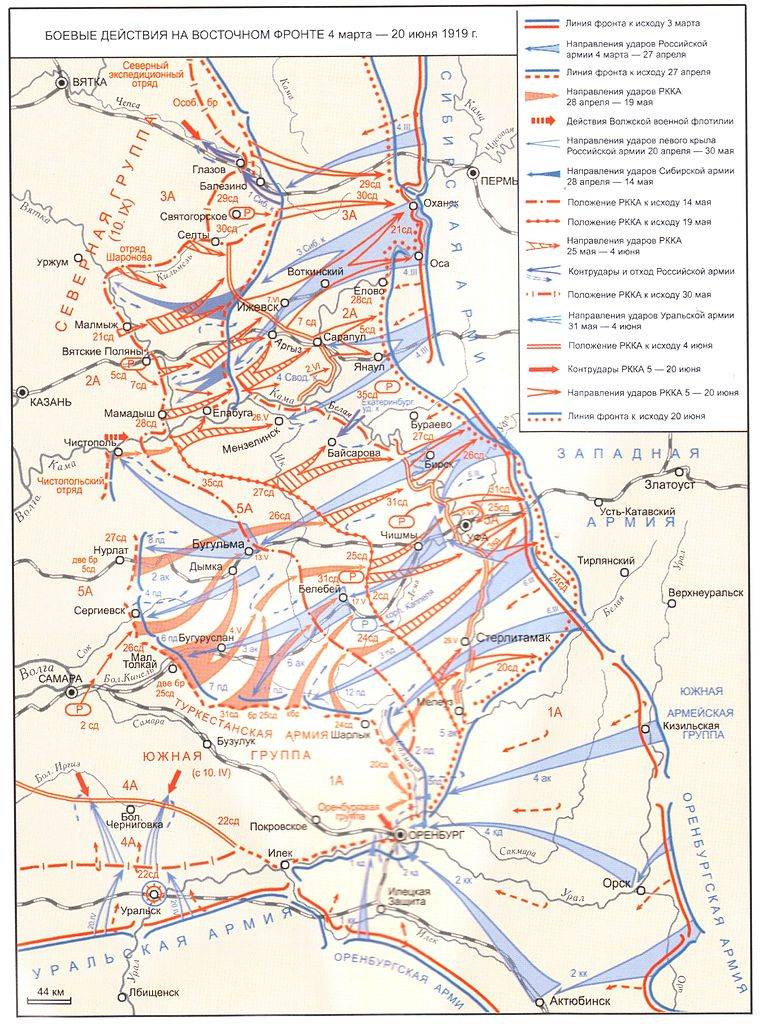
To be continued ...
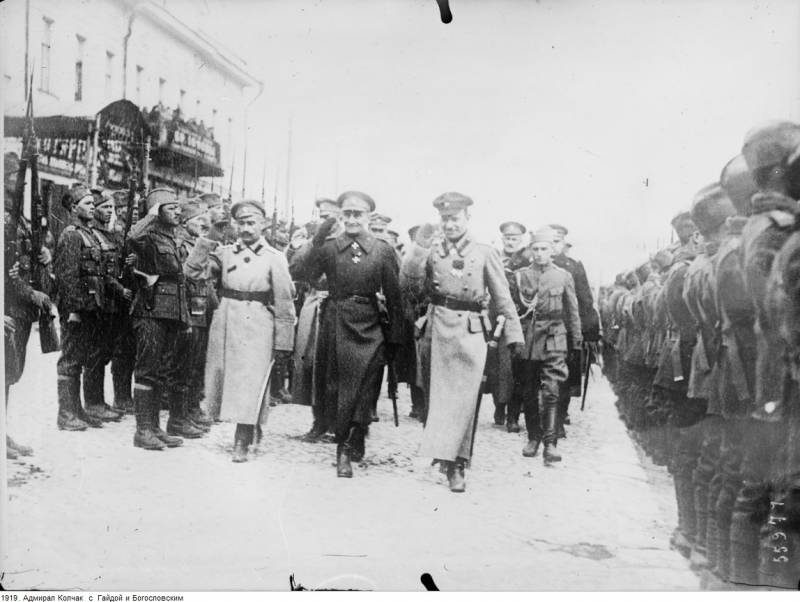
Information